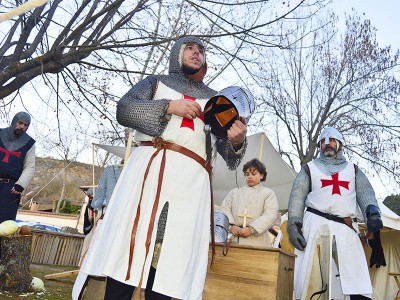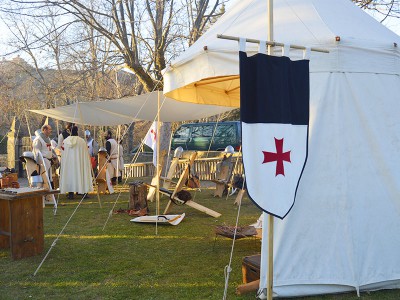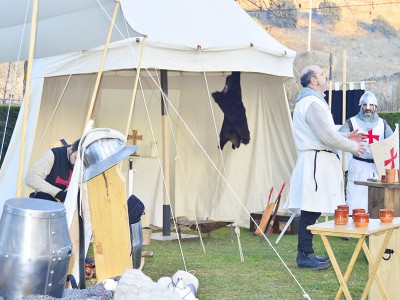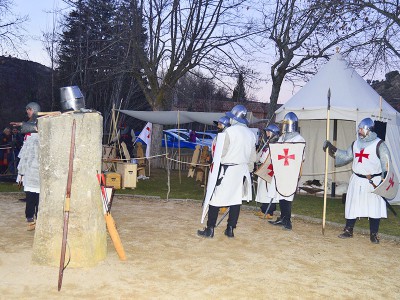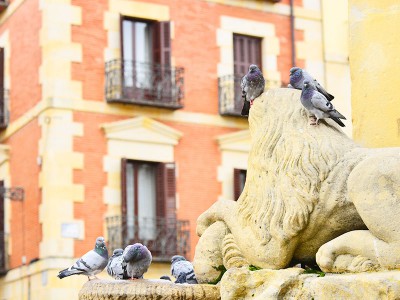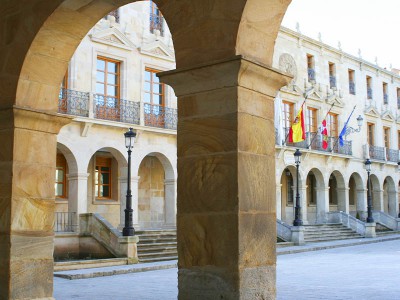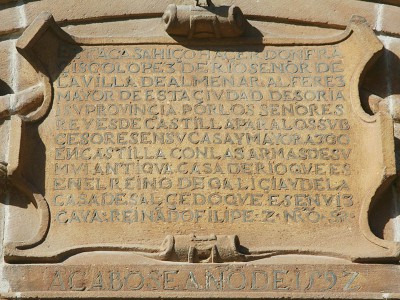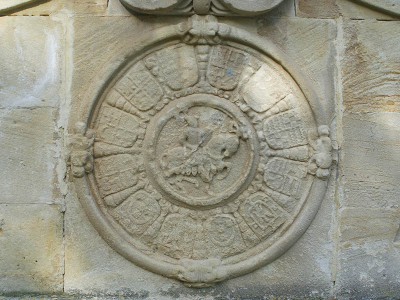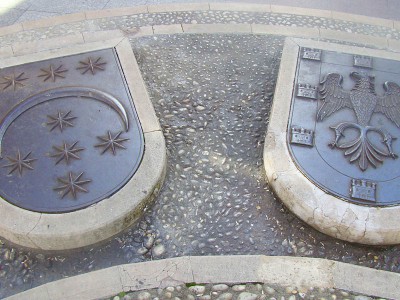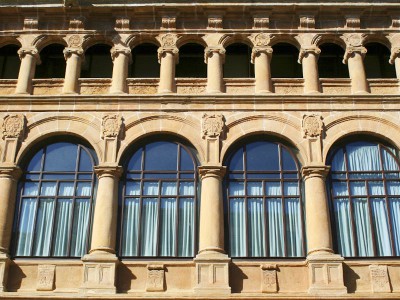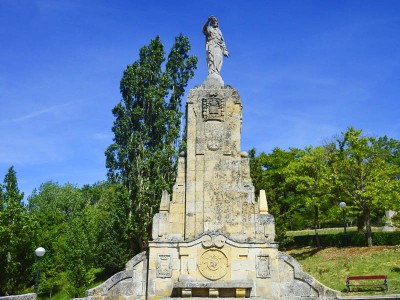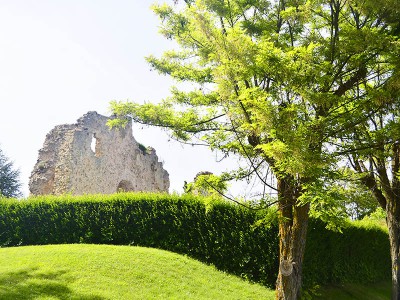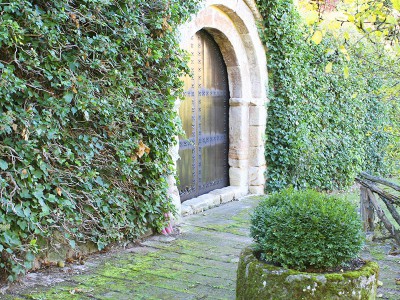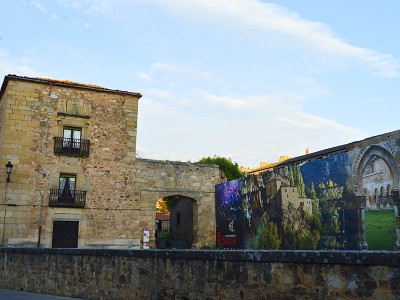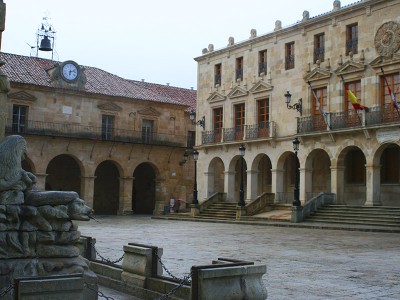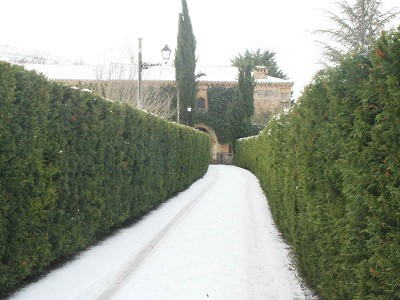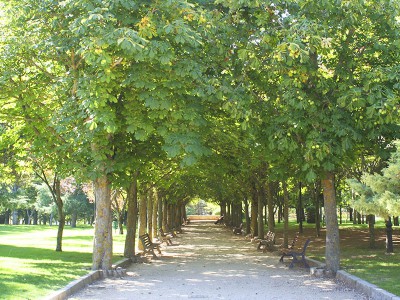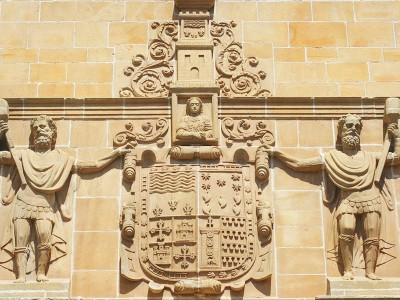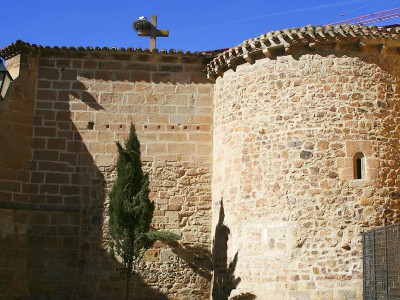TEMPLARIA AND KNIGHTLY
THE SORIA OF THE 12 LINEAGES AND MILITARY ORDERS
In the Middle Ages they burst with force the military-knightly orders, some of which were simultaneously religious character and with regard to Soria city we will focus on the Temple, the Sanjuanistas and Calatravos. In addition to this route incorporated the "joint" native chivalrous institution: the Twelve Lineages.
We propose to start the route in the church of El Salvador (1), located about two hundred meters north of the Tourist Office in the Mariano Granados squere; church retains its Romanesque apse and two Gothic chapels. Well, Fortun Lopez, second lieutenant or lord of Soria (1127-1135), who was present at the donation of Calatrava la Vieja to the founders of the Order of Calatrava, had a grandson named after him, Fortun Lopez, who was cofrade calatravo during the mastership of Fernando escaza (1169-1208) and built the church of the Savior, extramural, and donated it to the Order of Calatrava, later becoming parcel and, in addition, with a hospital in 1485. a lauda holding the altar reminds.
From El Salvador accede to the streets of El Collado (2), in which you can see coats of arms linked in one way or another to the Twelve Lineages, and stop in the Plaza of San Blas and Rosel (3), known colloquially as Square cake as in the center, around the lamppost, there is a circular mode attic with metal shields of the Twelve Lineages of Soria in which the various local noble houses were attached base, as they did in the s. Mesteños XVI big farmers in the Rio-Salcedo family who were counts of Gómara Soria and ensigns over.
And just one of them - Francisco López de Río and Salcedo "the rich" - was the builder of the great Renaissance palace that is far little hundred meters from "cake" known as Palacio de los Condes de Gómara (4), in which greater shield, gate, we can see one of their barracks two crosses flordelisadas whose type was used by the Order of Calatrava, Alcantara and Montesa. In addition, under the shield, there are two verses from the iconic psalm of the Order of the Temple: "Non nobis, non nobis, Domine / Sed nomini tuo da gloriam" (which can be translated as "Not for us, not for us, Lord, / but for the glory of your Name ").
For two alleys, with Calle Zapatería through, and transferring the Arc de Horn arrived at the Plaza Mayor (5) with the Palace Hall in front, a building that comes to occupy the site where was the old House of the Twelve Lineages whose blazon rolled and we can see stone above the central balcony and windows.
And now will head us toward Castle Soria up to the church of the Virgen del Espino and taking the pedestrian path from there starts to climb Castle Park, stopping at the monument halfway to the Sacred Heart (6) whose base can see the wheel of the 12 Bloodlines again.
The Order of the Temple -on which many legends have been planned since the arrest of his monks-knights in 1307 and extinction in 1312, has also been the focus of traditions and legendary tales in Soria city, town where his first gentlemen suggest tenentes and wardens, appointed by Alfonso I "the Battler" and Alfonso VII "Emperor" were lay brothers of the Temple as is documented. In some cases, even their wives and daughters were attached to such templaria lay brotherhood. So the top of the Cerro del Castillo (7), from where views of the city and the banks of the Duero obtained enclave is worthy of being included in this templario-chivalrous route.
And just as pledged to pay the Temple an annual amount of money, and horses and other items, either in life well after their death, presumably also favored the implementation of a Templar settlement, which may well be the origin of what later was monastery of San Polo, along the Duero, the oral tradition considered Templar in the late sixteenth century, as witnessed by Martel and Mosquera Barnuevo.
To San Polo (8) you can accessed from the Castle by the footbridge and across the island of Sotoplaya. The temple is late s. XII or XIII early and has been rebuilt and restored. The pedestrian walkway opened between 1586-1590 with pointed arches. There is a spring and medieval stelae. In addition, a legend states that the "Christ cellarer" gores Cross is in San Juan de Rabanera (by the Council and Calle Caballeros that recalls the 12 Bloodlines), he was in San Polo when he was a Templar.
Instead, Gustavo Adolfo Becquer believe, meanwhile, that the monastery which had been Templar was San Juan de Duero it seems to indicate in his legend "Mount of Souls" (1861), found next to this monastery that historically belonged to the Order of the Hospital of San Juan, being the first documented reference sanjuanista the year 1190. it is also cited as Templar church in the legend "the Moonbeam" (1862). And Night of the Dead legend "Mount of Souls" from the Rincon de Becquer to the Duero River with music, dances, phantasmagorical stage machinery, barefoot step on hot coals and reading of the legend by any actor or is remembered Famer national level.
In turn, the theosophist Mario Roso de Luna joined in his book "The Tree of the Hesperides" (1923) the story "The Quest of the Holy Grail" in the second part describes in 43 pages the life of Gines of Lara and Montalban to making last Templar commander of San Polo who also lives in San Juan de Duero in which he was initiated into the alleged esoteric mysteries of the Temple.
And indeed, between the Reception Center Tourist of Fielato and church-cloister of San Juan de Duero, the group of historical recreation Oria Dauria often dramatize a Templar camp, trousseau warrior and forms of combat during the bridge Inmaculada.
| Long | 4,1 Km aprox. | |
| Road | Urban | |
| Difficulty | low-mid | |
| Terrain | Pedestrian streets and roads |








